Not right now. But maybe later.
A criteria for deciding whether to pick up that last-minute request – or not
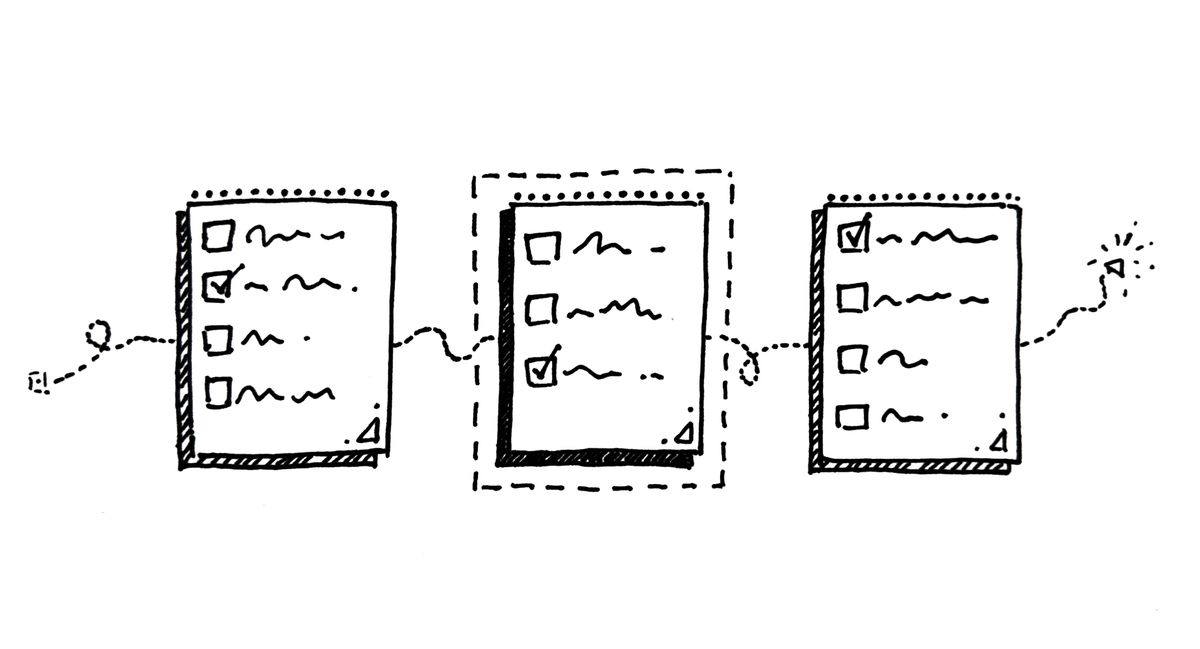
You’ll get started just after checking your emails. Right?
It’s perfect. You have discovered The Way. You have assimilated your organisation’s Big Goals, and aligned them with your Team Aspirations. You have planned out what you want to achieve this week, and mapped out your tasks for the following day. Now it’s the glorious morning of that following day (AKA today), and your to-do list – that cute little diagram of what shall be done – is just waiting for you to starting checking things off.
Before you get started for the day, you check Slack (“where work happens”), your email, and your calendar. Your calendar now features a 9:30 meeting booked in by a colleague, Stevie – this is in 25 minute’s time. While you’re looking at Slack, a message from Stevie pops up, letting you know she needs you to review something. So would do you mind just hopping on a call at 9:30? In your email, there are several comments from another colleague, Aaron, asking you to provide input into a client presentation for tomorrow. Aaron’s comments suggest that this feedback is kind of urgent.
The phone on your desk pings. It’s a text message from a real estate agent, asking about a property that you went to see recently, which ended up being a bare concrete lot once used to store roading equipment, apparently contaminated by diesel and pesticides. The message asks if you are still interested.
You also notice a WhatsApp message from your wife asking whether you filled out the permission form for your son’s field trip, and whether she needs to get coffee while she’s at the shops. You start looking for that permission form and while you’re in the kitchen, you check to see if you’ve run out of coffee beans. When you get back to your desk it’s 9:29 and you have to jump on to Stevie’s call.
The attention quotient
Text messages from a real estate agent and WhatsApp messages from family aren’t to do with work, but they divide up your attention in the same way as all the other messages. Once you’ve chopped up your attention into tiny bits, there’s very little left for tasks requiring deep concentration. Or sometimes for any tasks at all.
Your attention is divided into as many pieces as requests you receive.
Your attention is divided into as many pieces as requests you receive. Within the work context, it’s a mistake to go looking for these requests in the first place, once you’ve commenced your day (unless “Send Stevie an email response” is on your list). Otherwise your to-do list for the day will just get drowned out by new requests coming in.
Same-day delivery
Even if you’ve planned well and your to-do list for the day is achievable, sometimes work requests just parachute in.
“Can you just take a look at this [deck/doc/thesis/treatise]? Maybe so when I come back from lunch it’s done?”
These are “same-day delivery” requests, where the expectation (explicit or implied) is that you’ll complete this right now, or within the business day. The more you acquiesce to same-day delivery requests, however, the more requestors will come to expect you’ll pick them up in future. And ultimately you’ll find it harder to stick to your own priorities – because those priorities are dictated to you by the requests of other people.
If you work in a service role where you respond to such requests all the time, then fine – this is your gig. But outside such roles, same-day delivery requests disrupt the flow of getting through your daily to-do list. Even taking the time to decide whether or not to pick up a request is an interruption.
To make it less likely same-day delivery requests will wreck your daily productivity:
Don’t go looking for them. Your daily disruption is proportional to the level of attention you give to email, messaging apps, SMS. Of course, you’ll likely need to dedicate windows of time to check for messages – but maybe the start of the day isn’t the best time. And don’t just leave email and Slack open, watching, waiting for the distractions to pop up. That’s just called procrastination.
Have a criteria for what might warrant disrupting your to-do list for the day (example criteria below). It’s less mentally taxing to decide whether or not to pick up a request if you’ve made these calls beforehand. Most importantly: share this criteria with the people you work with (nicely, in a way that won’t get their hackles up).
Criteria for disrupting today’s to-do list
The answer to the question “Should I disrupt today’s work to pick up a request that just came through?” should generally be “No”. But workplaces can be messy and frenetic. Plans – which are really only guesses – can fall through. Sometimes people just need your help, even if they didn’t think to let you know ahead of time. And sometimes people could wait but would prefer not to, and are just trying their luck.
The method
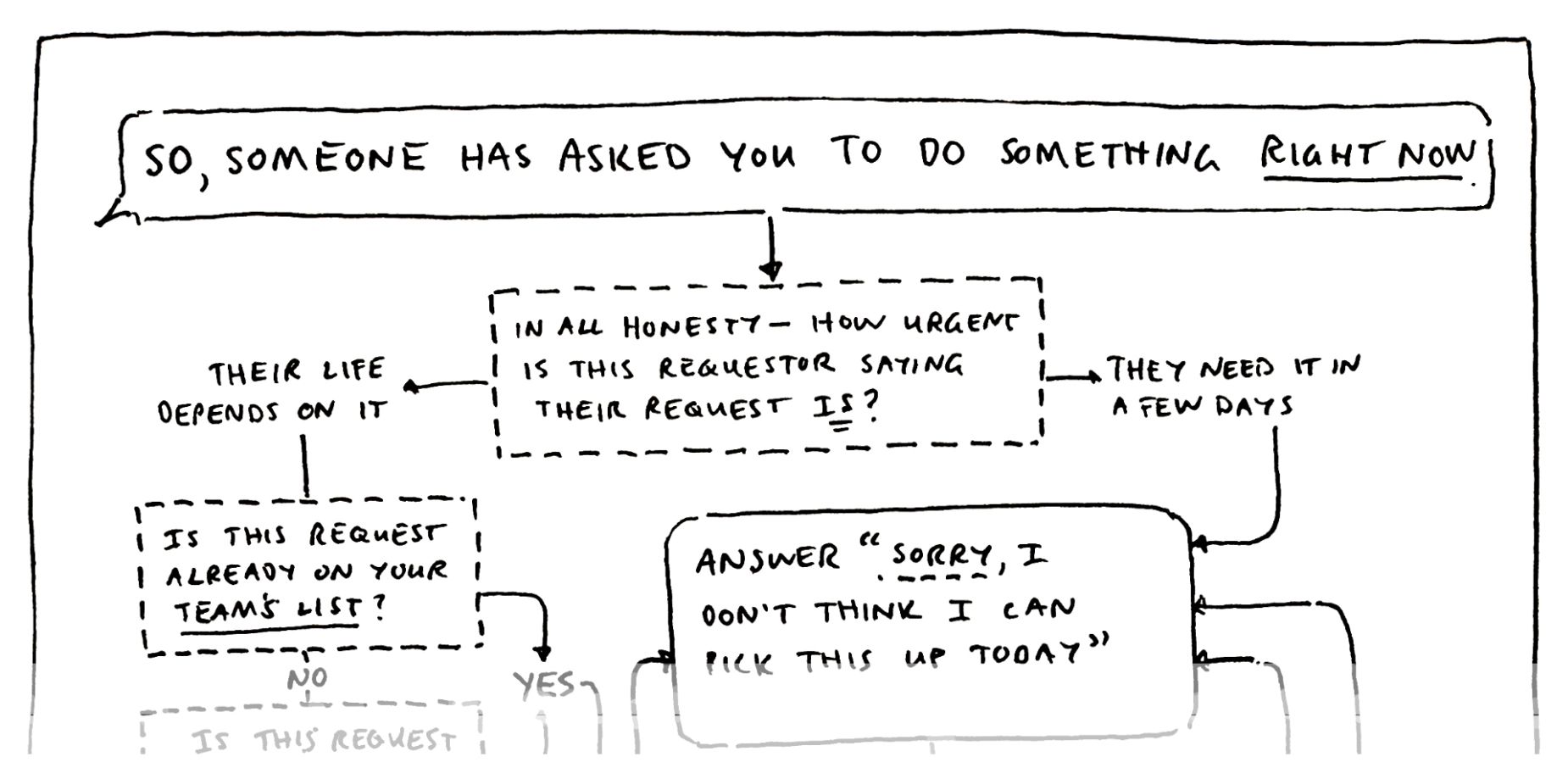
Consider this sample criteria for deciding whether to pick up a same-day request versus not:
- Determine the true urgency. Is this work really urgent, or is the person requesting it just saying so to hustle you along?
- Assess whether the request already exists on your own to-do list (for today or in general), or your team to-do list. Something already on your radar probably ought to have more weight than something that isn’t.
- Consider the request within the context of the current day. Is it pretty early on a relatively quiet day? Is the requestor in your immediate team? Can you do this in under five minutes? You might need to weigh the hassle of deferring this request versus just getting it out the door quickly.
Whatever the outcome, be kind with your responses. For example:
“Sorry, I don’t think I can pick this up today. But let me get back to you tomorrow, with a plan and a proposed date.” This allows you to back out quietly, with a promise to come back to it on your own terms.
“Okay, sure. I’ll take a look and get back to you before the end of the day.” This still gives you some breathing room to work this in alongside your other to-dos. “End of the day” could also be replaced with “tomorrow” or any other time, depending on the urgency.
Set expectations early
Having a criteria for picking up unexpected requests – and letting people know about it – is a start, but it’s only part of the solution. You also need to set expectations with the people you work with: like what you typically can and can’t pick up (note that this is subtly different to “will” and “won’t”). Consider weaving principles such as the following into future discussions:
- Same-day delivery generally isn’t possible, because you and your team plan work ahead of time.
- If it’s not on an existing list (or “board” – wherever you list work to be done), it doesn’t exist. If people want something done, they need to let you or your team know well in advance.
- Occasionally you might be able to pick up work – but it’s not a given, and there’s a set criteria for whether that’s possible.
This might all sound a little hardline to you. But if you want any chance of focusing on the tasks you’ve deemed important for the day, you can’t just pick up any old work any old time.
Grab this template – and any future template
Paying subscribers can download this comprehensive flowchart template, which maps out criteria for whether to pick up a same-day request or not. If you’re not a paying subscriber, consider a subscription, which will get you access to:
- All templates for practical posts like this one
- Exclusive posts
Thanks!
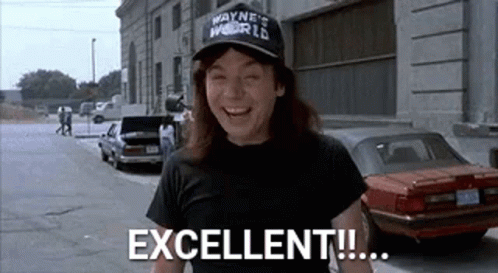
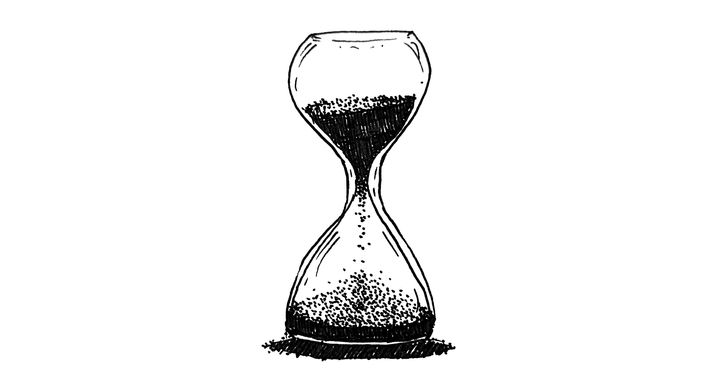
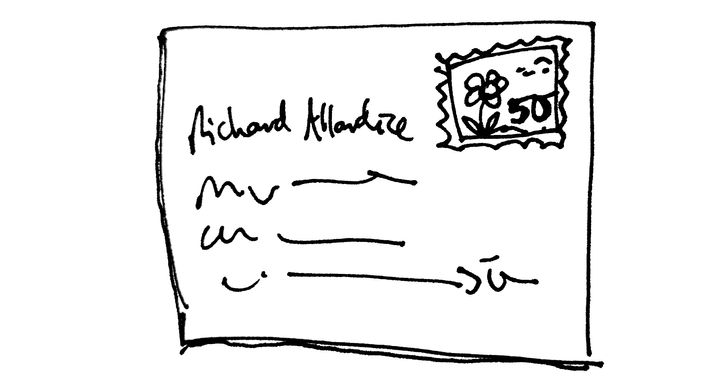
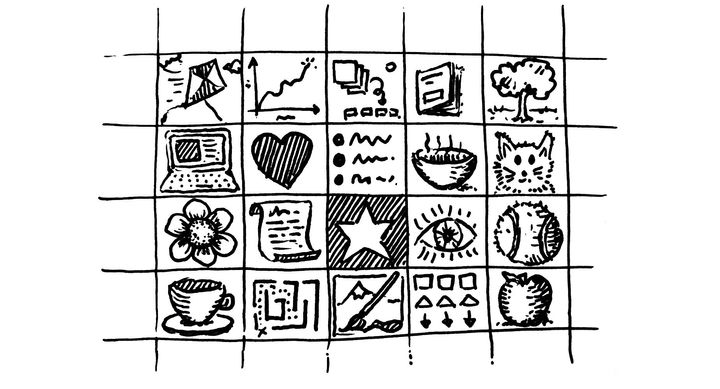
Comments ()